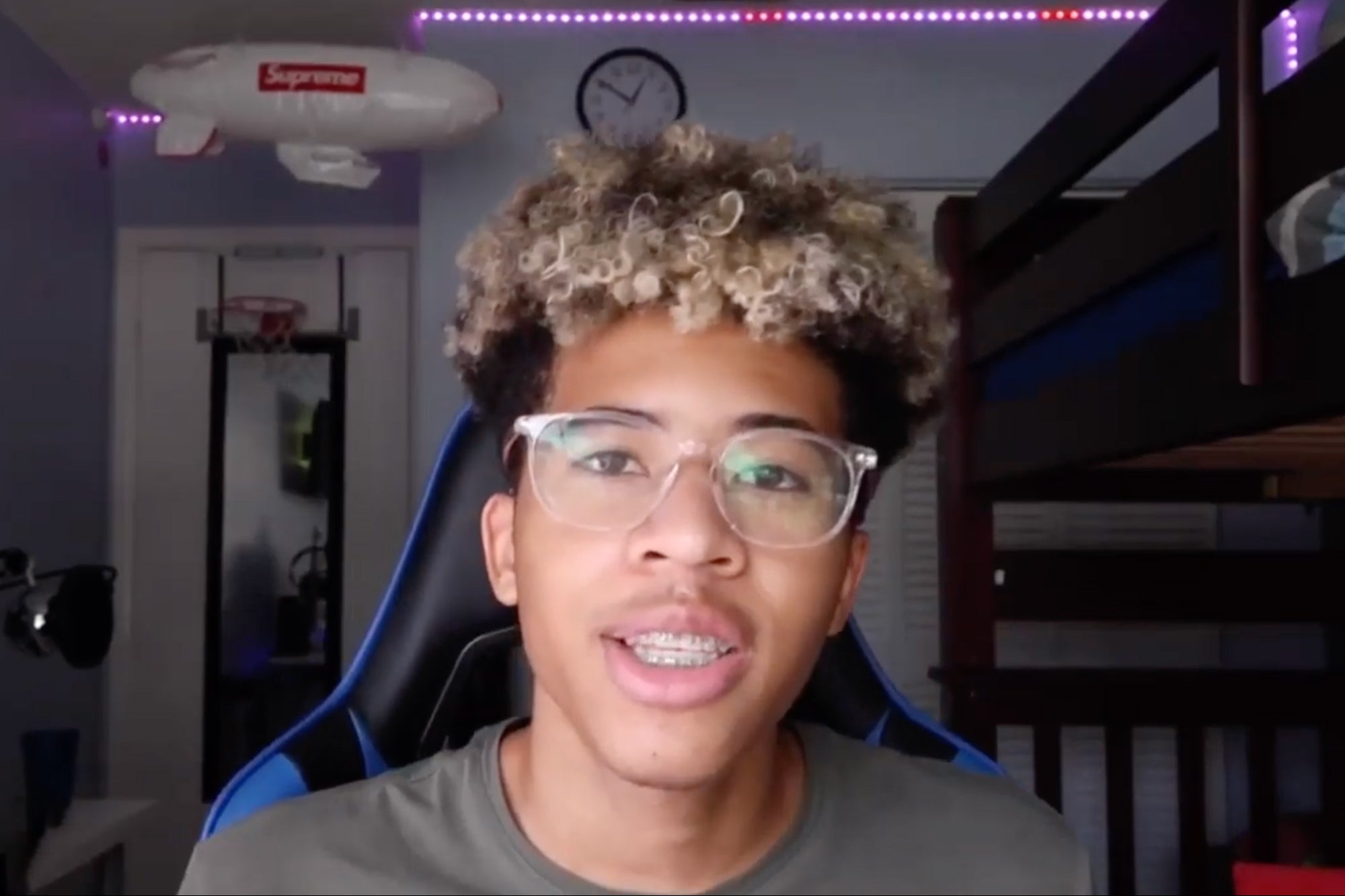How This 18-Year-Old TikTok Star Built a Business With 5 Million Followers
TikToker Ryan Shakes shares how he built a devoted and engaged following.

By Brendan Gahan •

Opinions expressed by Entrepreneur contributors are their own.
A list of the highest-earning TikTokers reveals several 20-somethings who are making north of $5 million a year off the short-form video app best known for lip-syncing and dance videos.
How did they achieve this status?
Influencers must have it easy. They must have won the equivalent of a social media lottery with a few winners selected at random. That there's no predictable method or strategy. It must come down to luck.
The reality is different. If you want to build an audience of millions it doesn't happen by accident. There is a process you must go through.
I recently had an in-depth conversation on this topic with Ryan Shakes.
Ryan is an 18-year old TikToker from South Florida with over 5 million followers. He's on track to sell over $1 million dollars of his own branded merchandise this year. He regularly gets brand deals in the tens of thousands of dollars. He earned $5,000 in two hours of live-streaming on TikTok because of all the digital gifts (which can be redeemed for cash) his fans send him.
Related: How to Create Short-Form Videos With Instagram Reels
Ryan didn't win some social media lottery. He didn't get lucky.
He grew up without a lot of money. In middle school, he saved up what little allowance he had and went to Walmart. He bought gummy worms in bulk and spent his entire 8th-grade year selling candy to his classmates at a small markup. By the end of the year, he'd saved enough to buy an iPad. Initially, he used it to make YouTube videos. Then in 2015, he came across Musical.ly (the app that was acquired by Bytedance and became TikTok).
He jumped on the platform and began posting religiously. Methodically he grew to the 5 million fans he's got today. According to Ryan, anyone can become an influencer if they're willing to put in the effort.
It comes down to three core strategies:
1. Create, Create, Create
2. Ride the trends
3. Collab
1. Create, Create, Create.
There's a saying amongst prominent YouTubers that you have to make 100 bad youtube videos before any are good. The same applies to TikTok. You don't come out of the gates with a fully-formed idea of what your account is going to be and expect it to explode.
When Ryan first started posting on Musically (now TikTok) he posted 20-30 videos a day. He wanted to get as many "at-bats' in as he could.
He wanted to hone his craft, and he knew the best way to learn was through repetition.
Each evening he'd analyze what he posted. He'd jot down the insights he learned, what his audience liked and then apply them to his next videos. Making small improvements over time was key.
If you look back at his early posts you can see how Ryan's content evolved. Initially, they were lipsync videos (like this). Over time he began experimenting with the format and developed his own comedic flare.
2. Ride the trends
We're all familiar with trending topics on Twitter. It's similar with TikTok, except there are audio tracks and hashtags instead of topics. And they're vital for community growth.
Related: How to Leverage Paid Social Media With Retargeting
According to Ryan, if you're never using trending audio (and to a lesser extent hashtags) you're not contributing to the broader conversations on the platform. You isolate yourself. You don't want to be screaming out into the void alone.
Before Ryan even comes up with an idea for a TikTok he sits with the app. He swipes in search of emerging audio tracks by seeking out TikTok's with a lot of engagement and keeps a tally of what audio tracks they are using. Once he's identified a pattern of several videos using the same track with a lot of engagement he begins formulating an idea around it.
3. Collab
By senior year of high school, Ryan had over half a million followers. He moved to a new school where there were a handful of other kids with TikTok and YouTube followings. They congregated at lunch and on weekends to get together and film as many TikTok's as they could. At times filming may have meant ditching class.
It paid off. Most of that group of friends who only had a few thousand followers at the start now have hundreds of thousands if not millions. His compatriots Tony Paul (1 million followers), Tyler Leon (400K followers), and Victoria Lex (400K followers) are also making enough off of TikTok to do it as a full-time job. Even though Ryan's following was the largest at the start, the cross-promotion benefited him. He was exposing himself to new audiences and that propelled his growth.
Related: Could You Be Making (or Multiplying) Your Income With Instagram?
According to Ryan collaboration is, and will always be, a tool to build an audience online. Influencer A has X audience and Influencer B has Y audience. The two promote one another to capture both X & Y audiences. This is why we've seen a proliferation of TikTok "collab houses' like the Hype House emerge. Creators are moving in together to live and collaborate to cross-pollinate audiences, pool resources, and grow their followings faster.
A rising tide lifts all boats
Ryan's journey is like any entrepreneur's journey. You delay safety and security in the short term in order to reward your future self.
Everyone starts from zero. The biggest influencers posted content for years before anyone cared. They were willing to face ridicule and scrutiny. They pursued their passion without job security or any assurance they'd ever succeed.
Ryan's tireless pursuit of his dream paid off. He's gone from a kid selling gummy worms to having millions of fans and a 7 figure a year business. Ryan knows most people won't have the discipline to do what he did. As simple as his tactics are, the process itself is incredibly difficult.
As Warren Buffett's business partner, and billionaire, Charlie Munger says "Take a simple idea and take it seriously."
I found Ryan's story to be so inspirational I've decided to take his simple ideas seriously. I've decided I'm going to get in front of the camera and apply Ryan's lessons. I want to see if I can replicate (even on a small scale) the success that he's had.
With the expert's advice what could go wrong?
Here's my account. Follow along to see my journey.










